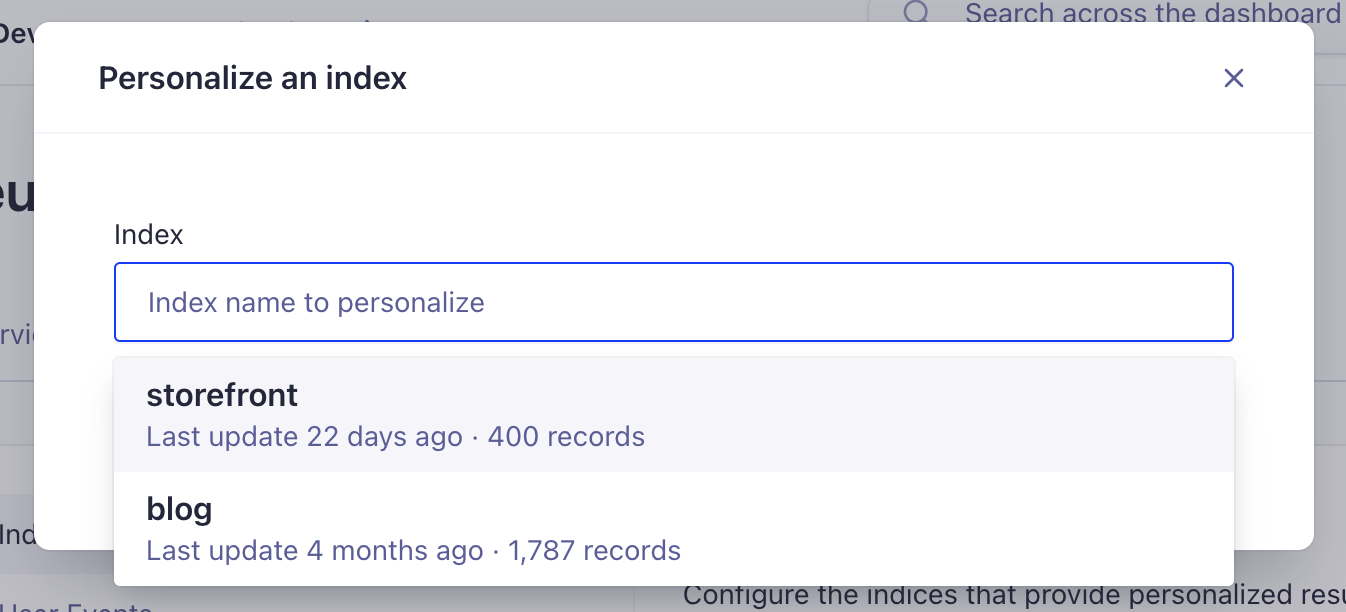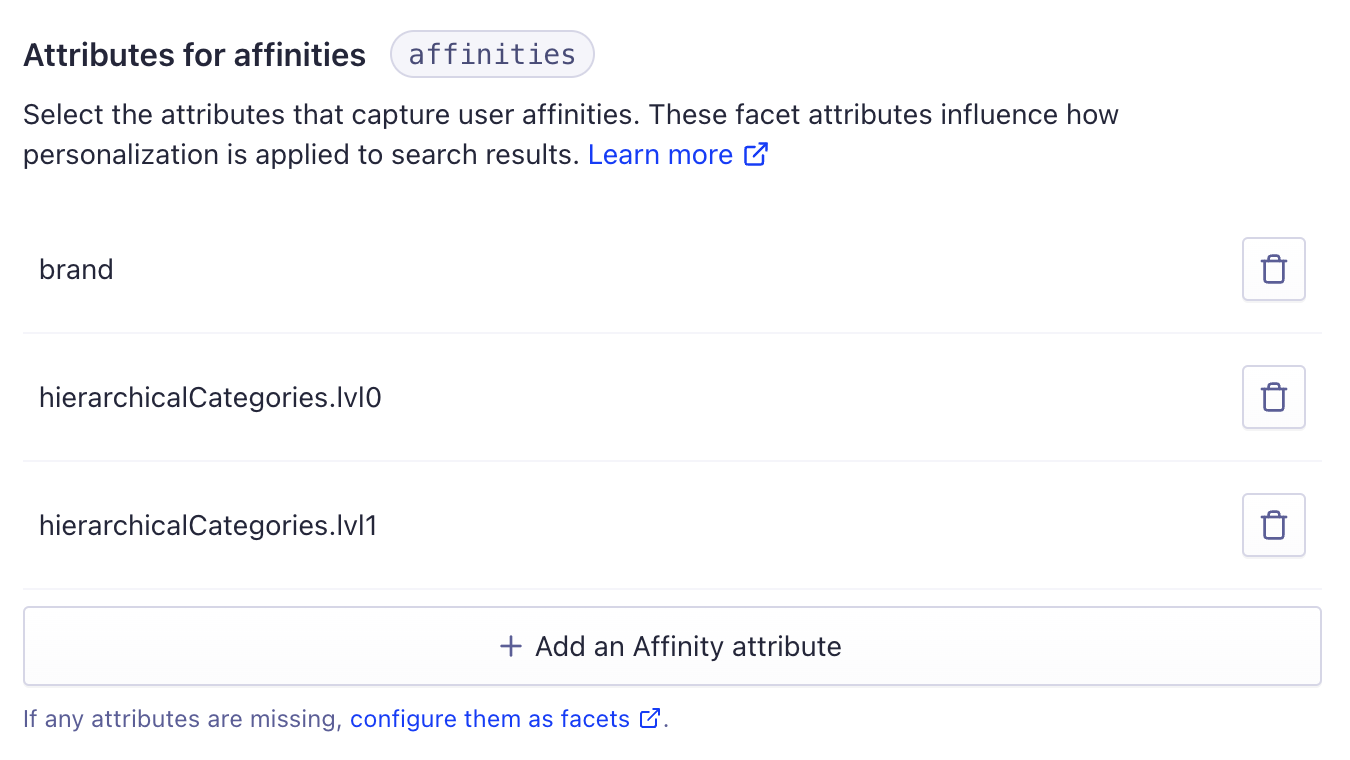Configure
Configure indices to personalize
Learn how to configure your indices for AI Personalization.
Beta
AI Personalization is a beta feature according to the Algolia Terms of Service (“Beta Services”).
Select the index to personalize
The first step to configuring AI Personalization is to select the indices to enable personalization on.1
Personalize an index
Go to the AI Personalization dashboard Configuration page, and click the Personalize an index button.

Button to personalize an index
2
Select primary index or replica
Select either a primary index or one of its replicas from the drop-down menu.AI Personalization doesn’t support personalizing both an index and its replicas at the same time.
When you personalize a primary index, its affinities and event mappings will automatically apply to all of its replicas, and vice versa.

Dashboard interface to select the index to personalize
Select the attributes for affinities
To personalize the search experience, AI Personalization needs to know which facet attributes to use as affinities. In the Affinities input, add all the relevant facet attributes you want to use for personalization. For example, if you’re running an ecommerce website, relevant facet attributes to select might include category, color, gender, and size.
Dashboard interface to select the facets for affinities
- AI Personalization relies on facet attributes. Make sure to add the attributes to use as affinities in the Attributes for faceting index configuration in the Algolia dashboard.
- AI Personalization supports dot notation in facet attribute names. This is useful when selecting nested facet attributes as affinities for personalization.
-
AI Personalization doesn’t support the
filterOnlymodifier for facet attributes, since users won’t interact with these attributes. They’re used for filtering, not faceting.

